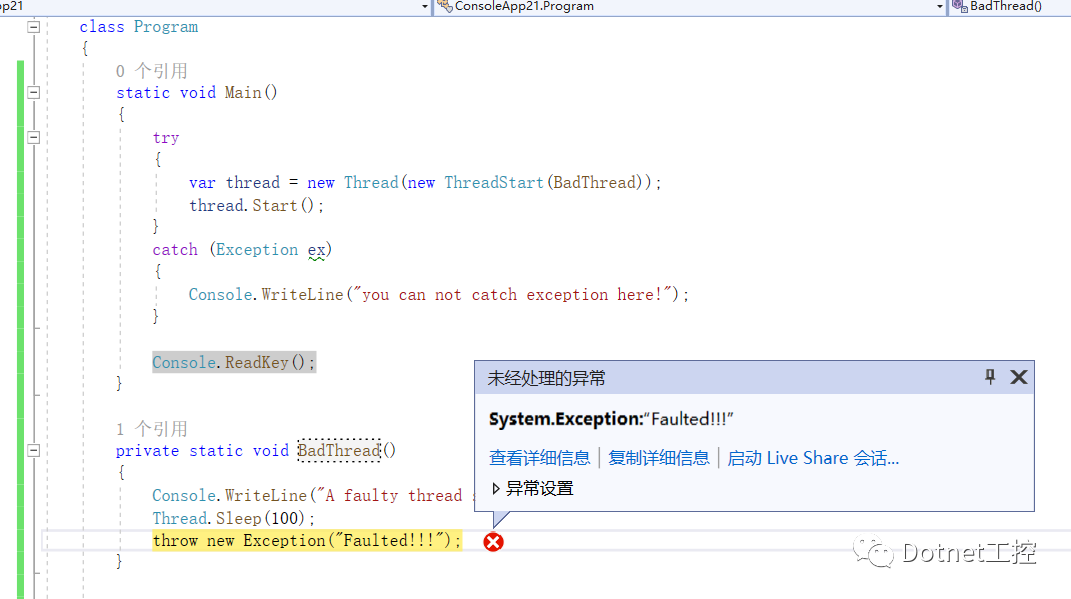自从.NET Framework 4.5+(含4.5)提供了Task开启线程后,基本上Thread的使用频率就大幅度降低了,但是一些老项目,或者老程序还是习惯用Thread去做,如果一定要使用Thred,那我们就必须在代码中使用try、catch块去处理异常的。
因为Thred的代码抛出异常将会是的应用程序被强制关闭,如果要避免这种情况的发生,就需要正确编写try/catch代码块。.
错误的写法如下:
static void Main(){try{var thread = new Thread(new ThreadStart(BadThread));thread.Start();}catch (Exception ex){Console.WriteLine("you can not catch exception here!");}Console.ReadKey();}private static void BadThread(){Console.WriteLine("A faulty thread started...");Thread.Sleep(100);throw new Exception("Faulted!!!");}
运行后直接崩溃了,如下图所示:

try catch应该放置到代码块内部去捕获异常。
正确的做法应该这样:
static void Main(){var thread = new Thread(CorrectThread);thread.Start();thread.Join();Console.WriteLine("A faulty thread started...");Console.ReadKey();}private static void CorrectThread(){try{Console.WriteLine("A faulty thread started...");Thread.Sleep(100);throw new Exception("Faulted!!!");}catch (Exception ex){Console.WriteLine($"Exception handled : {ex}");}}
总结:就个人而言,目前是能用task尽量不用thread,那thread没有用武之地吗,也不是。thread适合长时间运行的线程,task呢,小巧玲珑,它是通过线程池实现的,不用的时候可以自动回收,使用起来很方便。thread默认为前台线程,主程序必须等线程跑完才会关闭,但是可以通过设置IsBackground,设置为后台线程,而threadpool则默认是后台线程,Task由于是用线程池实现的本地队列,性能优越,同时Task提供了丰富的API来管理线程、控制。
